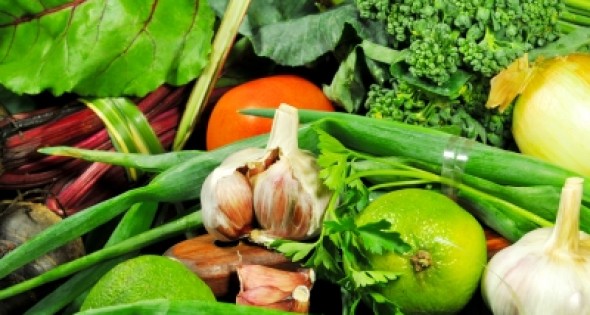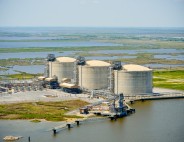
Appetites Return to Food Processing
28 May, 2014
By Mark Kleszczewski
Food processing and agriculture rebound.
Like most sectors of the economy, the multibillion dollar food industry took a significant hit in 2008-09, but new technology, shifting consumer tastes and rebounding global demand are driving food processing and agricultural businesses to new heights of activity in clusters all across North America.
Although food companies and communities must navigate many evolving trends — from sustainability and food safety reform to the growth of overseas markets and heightening demand for specialty foods — protecting farmland and investing in food innovation are yielding definite benefits in the fragmented, but massive sector.
Appetites Bounce Back
According to the U.S. Department of Agriculture (USDA), agriculture and its related industries contributed $775.8 billion to the U.S. gross domestic product in 2012, a 4.8 percent share, with American farm output contributing $166.9 billion of this sum.
Despite drought conditions and volatility in commodity prices in recent years, the industry is expected to benefit from an increasing supply of resources and investments to farmers and producers, noted analyst Antal Neville in a recent IBISWorld industry report.
On the demand side, rebounding consumer income and spending are driving particularly strong growth in value-added products and niche segments. The USDA and industry analysts estimate that U.S. organic food sales were $28 billion in 2012 (over 4 percent of total at-home food sales), up 11 percent from 2011, while the Specialty Food Association Inc. reports that the specialty food industry is booming, with record-breaking sales of $88.3 billion in 2013.
With its strong supply of raw materials, proximity to major consumer markets and presence of international companies like Hershey Foods Corp. and H. J. Heinz Co., Pennsylvania continues to lead in produce and manufactured food products, shipping $32 billion of food and $4.1 billion in beverages annually. Pennsylvania’s 2,300 food processing companies rank first in the value of shipments of canned fruit and vegetable specialty goods, and snack food and confectionery products which generate more than $5.1 billion in yearly sales.
The commonwealth’s ongoing success in the industry is based upon several factors, explains Lela Reichart, director at the Bureau of Marketing & Economic Development, Pennsylvania Department of Agriculture. “We’ve got a diverse climate and access to excellent distribution and transportation corridors, supported by a long-standing tradition of family farming and one of the best farmland preservation programs in the nation.”
Major food and beverage companies in particular are thriving in the commonwealth’s Lehigh Valley, which offers access to abundant, high-quality water, a wide assortment of farm inputs and an entire supply chain of packaging, storage and distribution connected to East Coast markets.
“Food is already an existing cluster in the Valley, but it’s one of the four main industries we’re targeting for further growth,” says Jarrett Witt, vice president of economic development, Lehigh Valley (Pa.) Economic Development. “There are some big names here like Coca-Cola, Nestle Waters, Boston Beer, Kellogg’s and Kraft Foods, yet we’ve also got specialty producers like Freshpet and Just Born.”
Recent success stories Witt points to are Bimbo Bakeries USA, which just opened a $75 million bakery in Upper Macungie Township, and Ocean Spray, which relocated from New Jersey and completed the largest beverage hub in the company’s network in late April. Once fully operational, the facility will make more than 30 million cases of beverages, about 40 percent of Ocean Spray’s North American annual volume.
In addition to good infrastructure and competitive cost structures, both companies, Witt says, were attracted to the cluster’s deep pool of well-educated machine operators, line technicians and technologists experienced in food technology and processing.
Dubbed America’s most diverse food basket, Idaho’s “Magic Valley” ranks in the state’s top four in 19 different food/ag categories and in the top 13 nationally in 16 categories. In addition to high-quality natural resources and a plentiful agricultural workforce, the region offers food companies the infrastructure to process, package and transport agriculture products.
Another powerhouse in the food sector is centered on southern Idaho. The region has secured a record-setting seven projects in 10 months, including new investments from food giants Chobani, Monsanto, Clif Bar and Frulact Group, as well as expansions of Glanbia Foods, McCain Foods and Calva/Brewster. These projects are expected to generate 5,000 new jobs with a combined investment of over $773 million.
“We’ve always been a very diversified food-based economy, but for our region to open or announce these many projects in such a short timeframe is pretty phenomenal. We’ve shattered all previous business records,” says Jan Rogers, executive director, Southern Idaho Economic Development Organization (SIEDO). “After deciding to go all in on food, we’re now becoming the country’s epicenter for food science, production and processing.”
Dubbed America’s most diverse food basket, the region’s “Magic Valley” ranks in the state’s top four in 19 different food/ag categories and in the top 13 nationally in 16 categories. In addition to high-quality natural resources and a plentiful agricultural workforce, the region offers food companies the infrastructure to process, package and transport agriculture products.
In the mid-Atlantic, close cooperation with the private sector in Caldwell County is helping make North Carolina one of the country’s top food-producing states. Food processors there can take advantage of several resources: low power, utility, labor and transport costs, numerous trucking carriers that connect abundant food suppliers to regional markets, and institutions which include NC State University’s Food, Bioprocessing & Nutrition Sciences program and the E3 sustainable manufacturing collaboration with NCSU.
“There is a pro-business attitude here that goes well beyond the sales pitch,” says Scott Hardiman, vice president and general manager, Vantage Foods Inc. “For example, when we were faced with an upgrade to our fire protection water line, the city, county and state collaborated to extend nearly a mile of water line at no cost to us.”
Moving over to Michigan, automotive manufacturing still holds sway, but agriculture and food actually comprise the state’s second-largest industry, earning a record $6.4 billion in cash receipts in 2010 alone. One of the state’s most active areas in the sector is in Macomb County where a solid network of roads and distribution facilities support the sale and export of Michigan food products.
“We’re really on the move with food in Macomb,” says Jack Johns, senior economic development specialist, Macomb County (Mich.) Department of Planning & Economic Development. “Agriculture and food processing have been growing quickly here, especially in the northern end of the county which has a lot of available space and very reasonably priced land.”
Besides an extensive multimodal network and 24-hour airport cargo service, Gray says that the Leduc-Nisku, Alberta region’s growth in the highly-competitive global food market is also being accelerated by an increasing emphasis on research and innovation. Companies can access the Agrivalue Processing Business Incubator, which assists established food manufacturers in new product/process development, refinement, testing and manufacturing.
“Since we’re positioned between two border crossings, facilities here can get trucks into Canada within with 30 minutes,” adds Stephen Cassin, director, Macomb County (Mich.) Department of Planning & Economic Development. “That’s one of the reasons why a lot of agricultural products are made in Macomb County and why we’re seeing companies looking to locate here.”
On the other side of the border, western Canada’s agricultural heartland is also benefitting from growing demand and access to international markets, with Alberta’s International Region —which represents 20 percent of Canadian agri-food exports — concentrated on meat, fish and seafood, and cereal products.
Though long a prominent industrial and energy hub, the province’s food processing, food service and beverage industries now generate in excess of $10 billion in value of shipments which are expected to increase next year.
“Food production, engineering and processing are definitely a growing industry for us,” says Krystal Gray, marketing and communication manager, Leduc-Nisku (Alberta) Economic Development Association. “A key driver is demand in markets like Japan and the liberalization of trade agreements such as the CETA pact with the European Union.”
Besides an extensive multimodal network and 24-hour airport cargo service, Gray says that the region’s growth in the highly-competitive global food market is also being accelerated by an increasing emphasis on research and innovation. Companies can access the Agrivalue Processing Business Incubator, which assists established food manufacturers in new product/process development, refinement, testing and manufacturing, and the Leduc Food Processing Development Centre which features a modern pilot plant and product development laboratory facility, staffed with experienced food scientists, engineers and technologists.
Attitude Makes the Difference
As the consumption and production of food becomes more global and sophisticated, challenges are increasing, but so are opportunities. To take advantage of them, proper incentives and physical assets are critical, but responsiveness to changes in the marketplace and a sense of stewardship are proving to be even more important.
“We see the worldwide demand for Pennsylvania’s food products increasing, so we stand ready to help the next generation jump on the opportunity in the global marketplace,” Reichart says. “Besides changes at the policy level — like the elimination of the inheritance tax on family farms — one of the main advantages we have, and why our agricultural and food products continue to be highly regarded, is the sense of pride and dedication that our farmers, producers and food companies have in their work.”
“Although you have to offer really solid business solutions, it’s not just about the money or ‘the deal’ anymore, especially as we transition more into natural foods,” says Idaho’s Rogers. “Companies are looking to locate their operations in communities and regions with a local culture that are a good fit for their company, and with similar goals, like sustainability. We offer a commitment to food and a sense of place that’s become very important in the decision-making process. It’s a big reason why as a food cluster, we’re going to continue to grow and expand.”
For complete details on the organizations featured in this article, visit:
Economic Commission of Caldwell County (N.C.)
Leduc-Nisku (Alberta) Economic Development Assn.
Lehigh Valley (Pa.) Economic Development
Pennsylvania Department of Community and Economic Development
Southern Idaho Economic Development Organization
Illustration by Carlos Porto at Free Digital Photos.net
Related Posts
-

Manufacturing Combats Workforce Uncertainties
-

Oil and Gas Seek Growth Despite Volatility
-

Partners in the Great Outdoors
-

Headquarters Expand Their Horizons
-

Arts Scene Complements the Innovation Economy
-

Natural Assets Inspire Innovations in Recreation Economy
-

Answers to Data Questions are in the Cloud
-

Automotive Industry is Smarter and Lighter
-

Next Level Warehousing and Distribution
-

How to ‘Like’ Social Media









